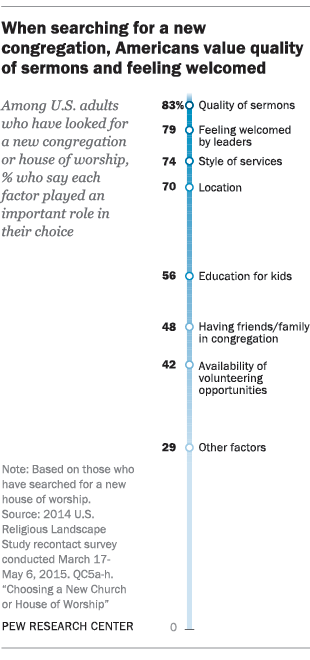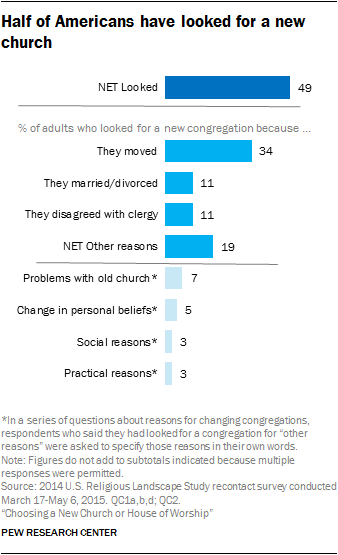So your parish has a vision, and maybe even a catchy vision statement–now what?
Vision that’s not communicated broadly falls flat. Because the point of vision is that it guides everyone. Not just the elite. Not just leaders. Everyone.

How to communicate broadly in a Catholic parish?
The Sunday Homily.
I can hear the mental excuses now. All the reasons why your parish can’t communicate vision in homilies, how the people won’t like it, how it can’t be planned, there’s not enough time, etc. But, none of the excuses override the critical importance of preaching the vision, frequently and repeatedly, to the broadest parish audience.
As Fr. James Mallon, author of Divine Renovation and The Divine Renovation Guidebook, explains:
I remember catching myself saying once, ‘But I spoke about that in a homily last year.’ It is foolish for us preachers to think that most parishioners are going to remember something we said two weeks before, never mind a year before. In truth, if the sign on the bus is to be plainly recognized, we must speak about vision over and over again. In the last three years, I have committed myself to preaching some form of visioning homily at all the weekend Masses every three weeks. I am convinced that this is necessary (Divine Renovation, 255).
Sometimes it can be tempting to think, it’s in the bulletin right? We’ve got a sign up? The staff knows? It’s on the website? But that’s not enough, “there are no shortcuts when it comes to communicating vision: it takes time and intentionality” (DR Guidebook, 60).
Let’s start with the practical: what is a visioning homily?
- not simply information, but the inspiration and motivation “to desire that preferred future and be wiling to make the changes necessary” (DR Guidebook, 60)
- “A homily that attempts, in some way, to address the question of why are we here, where are we going and why we do the things we do, or are trying to do the things we are trying to do” (DR Guidebook, 62)
- “Preaching about the mission of the Church and the future of your parish in a way that all your parishioners can hear and understand” (DR Guidebook, 62)
Does it really need to be repeated so often?
Answer: Yes. Here’s why: “If a parish is becoming truly missional and is innovating, there will be ongoing change within the parish. Change must always be explained in light of the vision” (Divine Renovation, 256). Most people don’t love change. By communicating the vision frequently (as Fr. James Mallon does, roughly every 3 weeks) the parish helps each and every person know and understand how concrete changes and decisions fit into the big picture, and help guide the efforts.
Okay, I’m ready. But what goes into a visioning homily?
Drawing from Divine Renovation (pg. 256-257), here are the key elements in a visioning homily, with examples from a visioning homily (Groundbreaking 05: Vision, April 24, 2016) at Church of the Nativity in Timonium, MD.
- Answer: why are we here? Remind the listeners why the parish exists, what God has called you to, what your mission is. For Church of the Nativity, it’s growing disciples while growing as disciples. This gets mentioned twice in the first four minutes (at 1:50-2:08 and 3:50-4:04).
- Name: what’s not right at the gut level. Scratch the point of dissatisfaction that people are experiencing. Help everyone feel the need. For Church of the Nativity, it’s that it’s “hard to invite people to come people to church when there’s no place to park and no place to sit” (4:30-4:45). This is something tangible. Lots of people in the parish may have experienced this…tentatively thinking about inviting a friend to Mass, but wary of doing so because of the seemingly crowded experience.
- Explain: why the current situation or past models won’t work. This might include some transparency or vulnerability. Or showing how the parish has “done its homework” in trying to address the point of dissatisfaction in the past. Aim to be clear and honest about how a particular [old] way of doing things isn’t working, but without blaming people, staff, specific groups, etc. Since Church of the Nativity is addressing how to accommodate growth, the leaders share what they’ve done in the past or tried (different times, off-campus sites, etc), and how these solutions don’t effectively lead toward the parish’s vision (1:00-1:22).
- Inspire: capture imaginations, invite people to dream. Encourage everyone listening to join in the “imagine if…” for the parish. What could it be? This is a time, not for information, but to make our hearts leap, make even the most change-averse person in the pew have a momentary optimism about the future. In the example from Church of the Nativity, Brian Cook reminds the community of pieces of plywood the parish had “filled with the names of all your friends, family members, co-workers…people you’re praying for, that one day they’ll come to church and meet their Heavenly Father…this project is about making room for them, all of them” (5:30-6:00) and continues to spur the imagination as to the wider significance of the parish’s direction, that “This new building can stand as a hopeful sign that intentional growth is still possible…that God is still using the local church to change lives” (6:10-6:41).
- Share: the plan for how we’re getting to where we’re going. This part is the most intuitive. We like to talk about what we’re doing. But remember, this is just one of five key elements. Without the other pieces, this part of a visioning homily can quickly become a litany of information, rather than the transformation that’s at the heart of vision and change leadership. Church of the Nativity puts it concisely: it’s about “creating empty seats at optimal times” and that phrase is used at least four times in the 7-minute vision-casting portion of the Sunday message (remember, repetition works!). The “how” is that as the parish responds to the call to “invest your treasure in the Church” this will result in hearts “connected to the Church” and the “growth in faith that comes somewhere outside of your comfort zone.”
A well-crafted visioning homily weaves these elements together, independent threads yet repeated and interrelated. There’s a logical flow from reminding who we are, to identifying and understanding the “situation” (Name & Explain), to inspiring, and only then speaking the plan.
A visioning homily doesn’t need to take a lot of time. While this entire message from Church of the Nativity is “long” (20 minutes in total) by most Catholic standards, the vision casting portion is solidly within the first 7 minutes. Visioning homilies can be done in any Catholic parish on a regular basis. Here’s an example from
The other lesson from the Church of the Nativity example is that a parish need not have a singularly incredible, awesome, best-preacher-ever to communicate vision. Brian Cook, Tom Corcoran, and Fr. Michael White (the 3 speakers in the Church of the Nativity message) are ordinary folks, just like you. They stumble on their words (as we all do). It’s not always the most beautiful language. And think about it–if you’re preaching on vision once every three weeks, not every one is going to be your personal best. The point is, they commit. They do it. One doesn’t have to be an especially-gifted dynamic preacher to communicate vision. Check out their book, Rebuilding Your Message (and related podcasts) for practical tips on how any disciple of Jesus Christ can grow as a communicator.
Do you have a great visioning homily to share? Post a link in the Comment section to help us all grow in this essential area of parish ministry.
p.s. Download the “Groundbreaking 05: Vision” example I used here. All vision casting elements are present within the first 7 minutes. I’m not sure how long beyond March 2017 the download will be available, but all key excerpts are in this post–viewing is optional 🙂
 Pastoral planning has gotten a bad rap over the past few decades. Not outwardly, I mean, who can rationally oppose the idea of planning for the future? But, from the surge of materials encouraging pastoral plans that emerged in the 1990s and 2000s, what fruit have many parishes seen? It’s possible to write an exceptional pastoral plan to maintain exactly what you’ve got in your parish right now. It’s also possible to write an exceptional pastoral plan and simply leave it on the shelf. A check-the-box binder that maybe the bishop required of you.
Pastoral planning has gotten a bad rap over the past few decades. Not outwardly, I mean, who can rationally oppose the idea of planning for the future? But, from the surge of materials encouraging pastoral plans that emerged in the 1990s and 2000s, what fruit have many parishes seen? It’s possible to write an exceptional pastoral plan to maintain exactly what you’ve got in your parish right now. It’s also possible to write an exceptional pastoral plan and simply leave it on the shelf. A check-the-box binder that maybe the bishop required of you.



 For the past week, we’ve been diving into key points and applications from Christel Manning’s
For the past week, we’ve been diving into key points and applications from Christel Manning’s 
 Welcome to the
Welcome to the 
